Your Window to Inspiration: Seamlessly Browse Tumblr!
Astrophysics - Blog Posts
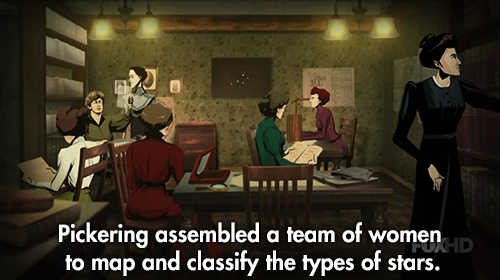
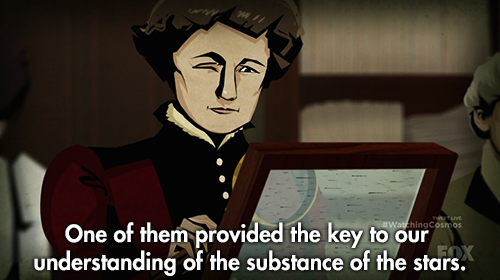
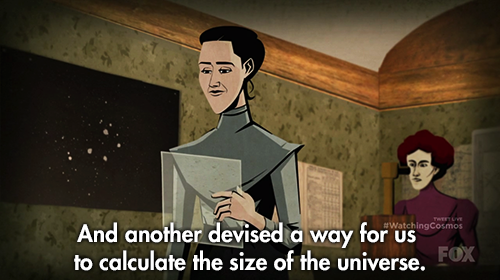


Neil deGrasse Tyson is not impressed with all your sexism.

Mare Orientale - January 12th, 1996.
"Looking like a target ring bull's-eye, the Mare Orientale is one of the most striking large scale lunar features. Located on the Moon's extreme western edge, this impact basin is unfortunately difficult to see from an earthbound perspective. It is over 3 billion years old, about 600 miles across and was formed by the impact of an asteroid-sized object. The collision caused ripples in the lunar crust, resulting in the three concentric circular features visible in this 1967 photograph made by NASA's Lunar Orbiter 4. Molten lava from the Moon's interior flooded the impact site through the fractured crust, creating a mare. Dark, smooth regions on the Moon are called mare (Latin for sea), because early astronomers thought these areas might be oceans."


Unexpected complex chemistry in primordial galaxy
University of Arizona astronomers have learned more about a surprisingly mature galaxy that existed when the universe was just less than 300 million years old – just 2% of its current age.
Observed by NASA's James Webb Space Telescope, the galaxy – designated JADES-GS-z14-0 – is unexpectedly bright and chemically complex for an object from this primordial era, the researchers said. This provides a rare glimpse into the universe's earliest chapter.
The findings, published in the journal Nature Astronomy, build upon the researchers' previous discovery, reported in 2024, of JADES-GS-z14-0 as the most distant galaxy ever observed. While the initial discovery established the galaxy's record-breaking distance and unexpected brightness, this new research delves deeper into its chemical composition and evolutionary state.
The work was done as part of the JWST Advanced Deep Extragalactic Survey, or JADES, a major James Webb Space Telescope program designed to study distant galaxies.
This wasn't simply stumbling upon something unexpected, said Kevin Hainline, co-author of the new study and an associate research professor at the U of A Steward Observatory. The survey was deliberately designed to find distant galaxies, but this one broke the team's records in ways they didn't anticipate – it was intrinsically bright and had a complex chemical composition that was totally unexpected so early in the universe's history.
"It's not just a tiny little nugget. It's bright and fairly extended for the age of the universe when we observed it," Hainline said.
"The fact that we found this galaxy in a tiny region of the sky means that there should be more of these out there," said lead study author Jakob Helton, a graduate researcher at Steward Observatory. "If we looked at the whole sky, which we can't do with JWST, we would eventually find more of these extreme objects."
The research team used multiple instruments on board JWST, including the Near Infrared Camera, or NIRCam, whose construction was led by U of A Regents Professor of Astronomy Marcia Rieke. Another instrument on the telescope – the Mid-Infrared Instrument, or MIRI, revealed something extraordinary: significant amounts of oxygen.
In astronomy, anything heavier than helium is considered a "metal," Helton said. Such metals require generations of stars to produce. The early universe contained only hydrogen, helium and trace amounts of lithium. But the discovery of substantial oxygen in the JADES-GS-z14-0 galaxy suggests the galaxy had been forming stars for potentially 100 million years before it was observed.
To make oxygen, the galaxy must have started out very early on, because it would have had to form a generation of stars, said George Rieke, Regents Professor of Astronomy and the study's senior author. Those stars must have evolved and exploded as supernovae to release oxygen into interstellar space, from which new stars would form and evolve.
"It's a very complicated cycle to get as much oxygen as this galaxy has. So, it is genuinely mind boggling," Rieke said.
The finding suggests that star formation began even earlier than scientists previously thought, which pushes back the timeline for when the first galaxies could have formed after the Big Bang.
The observation required approximately nine days of telescope time, including 167 hours of NIRCam imaging and 43 hours of MIRI imaging, focused on an incredibly small portion of the sky.
The U of A astronomers were lucky that this galaxy happened to sit in the perfect spot for them to observe with MIRI. If they had pointed the telescope just a fraction of a degree in any direction, they would have missed getting this crucial mid-infrared data, Helton said.
"Imagine a grain of sand at the end of your arm. You see how large it is on the sky – that's how large we looked at," Helton said.
The existence of such a developed galaxy so early in cosmic history serves as a powerful test case for theoretical models of galaxy formation.
"Our involvement here is a product of the U of A leading in infrared astronomy since the mid-'60s, when it first started. We had the first major infrared astronomy group over in the Lunar and Planetary lab, with Gerard Kuiper, Frank Low and Harold Johnson," Rieke said.
As humans gain the ability to directly observe and understand galaxies that existed during the universe's infancy, it can provide crucial insights into how the universe evolved from simple elements to the complex chemistry necessary for life as we know it.
"We're in an incredible time in astronomy history," Hainline said. "We're able to understand galaxies that are well beyond anything humans have ever found and see them in many different ways and really understand them. That's really magic."
TOP IMAGE: This infrared image from NASA’s James Webb Space Telescope was taken by the onboard Near-Infrared Camera for the JWST Advanced Deep Extragalactic Survey, or JADES, program. The NIRCam data was used to determine which galaxies to study further with spectroscopic observations. One such galaxy, JADES-GS-z14-0 (shown in the pullout), was determined to be at a redshift of 14.3, making it the current record-holder for most distant known galaxy. This corresponds to a time less than 300 million years after the big bang. NASA, ESA, CSA, STScI, Brant Robertson (UC Santa Cruz), Ben Johnson (CfA), Sandro Tacchella (Cambridge), Marcia Rieke (University of Arizona), Daniel Eisenstein (CfA), Phill Cargile (CfA)
LOWER IMAGE: Timeline of the universe: Although we are not sure exactly when the first stars began to shine, we know that they must have formed sometime after the era of Recombination, when hydrogen and helium atoms formed (380,000 years after the big bang), and before the oldest-known galaxies existed (400 million years after the big bang). The ultraviolet light emitted by the first stars broke down the neutral hydrogen gas filling the universe into hydrogen ions and free electrons, initiating the era of Reionization and the end of the Dark Ages of the universe. NASA, ESA, CSA, STScI
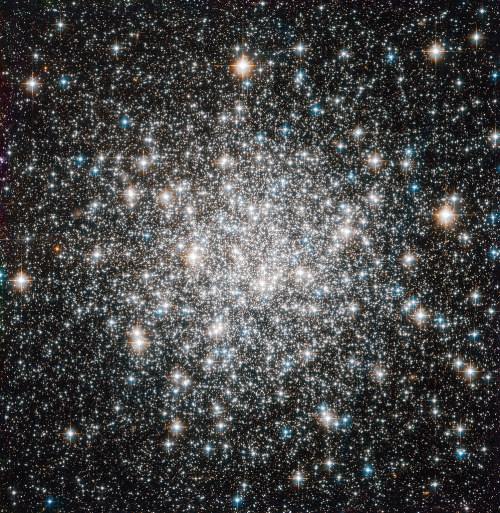
A ten billion-year stellar dance by europeanspaceagency
Ten interesting facts about Uranus
Like the classical planets, Uranus is visible to the naked eye, but it was never recognised as a planet by ancient observers because of its dimness and slow orbit. Sir William Herschel announced its discovery on 13 March 1781, expanding the known boundaries of the Solar System for the first time in history and making Uranus the first planet discovered with a telescope.

Uranus is the seventh planet from the Sun. It has the third-largest planetary radius and fourth-largest planetary mass in the Solar System. Uranus is similar in composition to Neptune, and both have different bulk chemical composition from that of the larger gas giants Jupiter and Saturn.

(The five largest moons of Uranus) Like all of the giant planets, Uranus has its share of moons. At present, astronomers have confirmed the existence of 27 natural satellites. But for the most part, these moons are small and irregular.

Uranus’ moons are named after characters created by William Shakespeare and Alexander Pope. These include Oberon, Titania and Miranda. All are frozen worlds with dark surfaces. Some are ice and rock mixtures. The most interesting Uranian moon is Miranda; it has ice canyons, terraces, and other strange-looking surface areas.

Only one spacecraft in the history of spaceflight has ever made a close approach to Uranus. NASA’s Voyager 2 conducted its closest approach to Uranus on January 24th, 1986, passing within 81,000 km of the cloud tops of Uranus. It took thousands of photographs of the gas/ice giant and its moons before speeding off towards its next target: Neptune.

Uranus has rings: All the gas and ice giants have their own ring systems, and Uranus’ is the second most dramatic set of rings in the Solar System.

Uranus makes one trip around the Sun every 84 Earth years. During some parts of its orbit one or the other of its poles point directly at the Sun and get about 42 years of direct sunlight. The rest of the time they are in darkness.
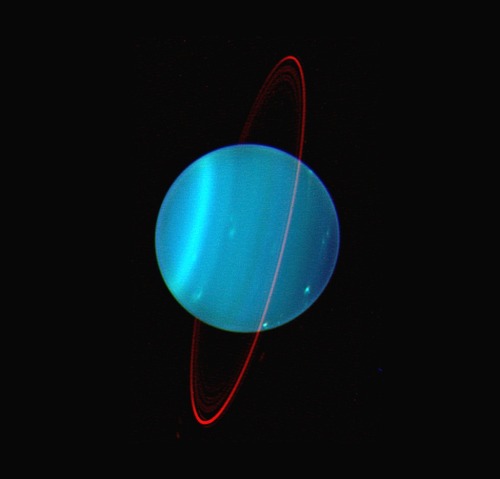
All of the planets in the Solar System rotate on their axis, with a tilt that’s similar to the Sun. In many cases, planet’s have an axial tilt, where one of their poles will be inclined slightly towards the Sun. But the axial tilt of Uranus is a staggering 98 degrees! In other words, the planet is rotating on its side.

Uranus is approximately 4 times the sizes of Earth and 63 times its volume.

Uranus is blue-green in color, the result of methane in its mostly hydrogen-helium atmosphere. The planet is often dubbed an ice giant, since 80 percent or more of its mass is made up of a fluid mix of water, methane, and ammonia ices.

Uranus hits the coldest temperatures of any planet. With minimum atmospheric temperature of -224°C Uranus is nearly coldest planet in the solar system. While Neptune doesn’t get as cold as Uranus it is on average colder. The upper atmosphere of Uranus is covered by a methane haze which hides the storms that take place in the cloud decks.
source
source
source
Images credit: NASA/ wikipedia

The Aurora Named STEVE by NASA Goddard Photo and Video

Cassini Observes Sunsets on Titan (Artist’s Rendering) by NASA on The Commons

Lunar Sand taken from the rim of the Shorty Crater by the Apollo 17 Astronauts. This “Orange Soil” is a result of volcanic activity on The Moon 3.8 billion years ago. It is so spherical and smooth due to the lack of gravity - pulling the molten substance in towards itself at the time of eruption and thus creating these round particles. ⠀
⠀Via Gary Greenberg, Carol Kiely, and Kate Clover

“Follow us @_astro_mania_ for more astronomy stuff. | -pic by @salvo.59_astrophotographer”.credit: @_astro_mania_.C’monBoard Astronomy compiles the best photographs of space. To find out everything about space, check out the C’monBoard website [link in the bio] ….Check out our astronomy-themed products at cmonstore.com#stars #telescope #bilim #stargazing #galaxy #nasabeyond #universe #hubble #astronomi #planets #astro_photography_ #astrophysics #nightscaper #ig_astrophotography #nightsky #uzay #cosmos #astrophotography #astronomia #nebula #solarsystem #science #milkyway #constellation #interstellar #nasa #universetoday


long time no see! last week i found out i’ve been accepted into the summer astrophysics programme i applied to which has made me so, so happy :D here’s to hard work paying off!

(I broke the last link, whoops)
Another week of theory, but no fun new particles. Instead, hear me try to say a lot of names of scientists or their eponymous equations as I talk about dark energy in the universe! Learn what some astronomers think it is and why other astronomers think there are better explanations for certain nutty galactic phenomena.
Below the cut are my sources, music credits, a vocab list, and the transcript of this episode. Let your voice be heard and tell me what you think I should research next by messaging me here, tweeting at me at @HDandtheVoid, or asking me to my face if you know me in real life. And please subscribe to the podcast on iTunes, rate it and maybe review it, and tell friends if you think they’d like to listen!
(If anything about dark matter or dark energy or cosmic microwave background radiation confused you over the past few podcasts, for sure send me your questions so I can ask someone more qualified than me—my doctorate student friend! My thoughts on the next episode are still the Voyager golden records, space race history, the transit of Venus, the Moon landing, Edmond Halley, or Dark Sky Preserves and it will be up on November 20th.)
Glossary
baryons - heaviest particles. Ex. Protons, neutrons. In astroparticle physics, electrons are included in baryonic matter.
cosmic microwave background radiation - the electromagnetic radiation left over from the time of recombination in Big Bang cosmology.
dark energy - a theoretical force made up of unknown, undetectable energy. It is used to explain why the universe is expanding more rapidly over time instead of slowing its expansion.
dark matter - a theoretical mass made up of unknown particles that have not been created on Earth. It is used to explain why galaxy clusters have 10x the mass that their light output suggests they would have; why distant stars on the edges of spiral galaxies orbit at the same speed as stars near the center of the galaxy; and the accretion of gases that created galaxies at the beginning of the universe.
fundamental forces - four fundamental forces in our current model of the universe: the strong and weak nuclear forces, the electromagnetic force, and gravity.
gravitational lensing - when light from more distant sources passes near a massive star, galaxy, or galaxy cluster and the object’s gravity bends the light like a lens to provide a warped angle view of space.
Transcript
Sources
Dark energy via NASA
Dark energy via Hubble
“The strangeness of dark energy is thrilling.”
Fundamental forces via Georgia State University
Dark energy via Science Magazine (April 2017)
László Dobos: “We assume that every region of the universe determines its expansion rate itself.”
Dark energy and the South Pole Telescope via Smithsonian Magazine (April 2010)
“Knowing what dark matter is would help scientists think about how the structure of the universe forms. Knowing what dark energy does would help scientists think about how that structure has evolved over time—and how it will continue to evolve.”
Intro Music: ‘Better Times Will Come’ by No Luck Club off their album Prosperity
Filler Music: ‘Even The Darkness Has Arms’ by The Barr Brothers off their album The Sleeping Operator
Outro Music: ‘Fields of Russia’ by Mutefish off their album On Draught
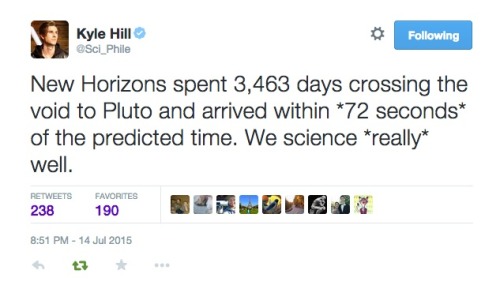
Its pretty incredible how accurate the science of astrophysics has gotten. New Horizons actually arrived 72 seconds early after travelling for almost 10 years straight to its destination.


The Pillars of Eagle Castle What lights up this castle of star formation? The familiar Eagle Nebula glows bright in many colors at once. The above image is a composite of three of these glowing gas colors. Pillars of dark dust nicely outline some of the denser towers of star formation. Energetic light from young massive stars causes the gas to glow and effectively boils away part of the dust and gas from its birth pillar. Many of these stars will explode after several million years, returning most of their elements back to the nebula which formed them. This process is forming an open cluster of stars known as M16. Image Credit & Copyright: Emanuele Colognato & Jim Wood
Ah jadi pengen kerja di NASA! Impian masalalu :')

Dusty Nebulae in Taurus This complex of dusty nebulae linger along the edge of the Taurus molecular cloud, a mere 450 light-years distant. Stars are forming on the cosmic scene, including extremely youthful star RY Tauri prominent toward the upper left of the 1.5 degree wide telescopic field. In fact RY Tauri is a pre-main sequence star, embedded in its natal cloud of gas and dust, also catalogued as reflection nebula vdB 27. Highly variable, the star is still relatively cool and in the late phases of gravitational collapse. It will soon become a stable, low mass, main sequence star, a stage of stellar evolution achieved by our Sun some 4.5 billion years ago. Another pre-main sequence star, V1023 Tauri, can be spotted below and right, embedded in its yellowish dust cloud adjacent to the striking blue reflection nebula Ced 30. Image Credit & Copyright: Bob Franke
You know how there's like some mathematician or something, who like did some useful stuff but is primarily known for overshadowing that work by going to great lengths trying to convince people to blow up the moon or something?
I wanna be like that but the hill I'm dying on is that the moon should be considered a planet

R.I.P. Vera Rubin; 1928-2016.
She never did win the Nobel prize for her discovery.



The Boogeyman Nebula and Tarantula Nebula
since I haven't reblogged much space lately
Here ya go <3


Alright ladies and gents! NEW MARS IMAGES
Check out brand new photos of the small moon Phobos! Mars Express Captures Stunning Image of Phobos, Olympus Mons, and Mars’ Atmosphere
⚠️remember to click on photos to view full 4k quality.












1200 Megapixel
⚠️Remember to click on photo to view in full hd quality






